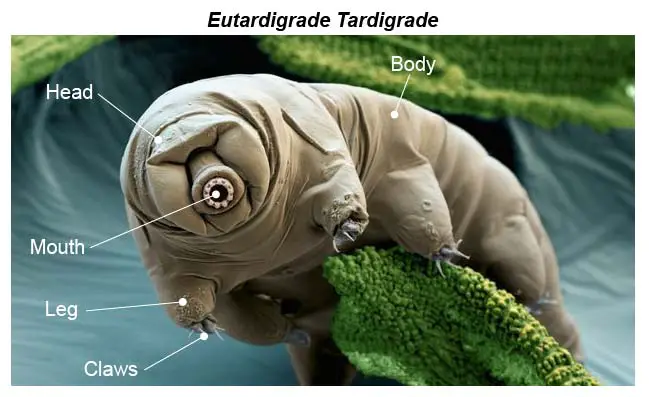Important Facts For Prelims
Tardigrades Aboard Axiom-4 Mission to Test Space Resilience
- 10 Jun 2025
- 6 min read
Why in News?
Indian astronaut, Shubhanshu Shukla, will pilot the Axiom-4 mission to the International Space Station (ISS) while Peggy Whitson (USA) will command the mission.
- As a part of the mission, ISRO is sending tardigrades (water bears)—microscopic, hardy organisms—to the ISS to study how life can survive in extreme space conditions.
What is the Axiom-4 Mission?
- About: Axiom Mission 4 (Ax-4) is the 4th private spaceflight to the ISS, operated by Axiom Space, a US-based space company, using the SpaceX Crew Dragon spacecraft.
- With this, Shubhanshu Shukla will become the 2nd Indian to travel to space (after Rakesh Sharma in 1984) and the 1st Indian to set foot on the ISS.
- Key Features: Axiom Space’s 14-day mission aboard the ISS will conduct scientific experiments, tech demonstrations, and educational outreach, advancing its goal to build the first commercial space station and transition from ISS reliance to an independent orbital platform.
- It features an international crew comprising members from the United States, India, Poland, and Hungary.
- Key Experiment:
- Physical and cognitive impact of using computer screens in microgravity.
- Behaviour and response of tardigrades (water bears) in space
- Impact of spaceflight on six varieties of crops specifically on moong dal.
- Growth rate, cellular responses, and biochemical activity of cyanobacteria (a group of bacteria that are known to produce energy through photosynthesis just like plants).
- Significance for India: Strengthens Indo-US space collaboration through ISRO-NASA partnership while conducting 10 critical experiments (microgravity, seed growth, tardigrade studies) to validate research for Gaganyaan mission (2027).
- Boosted the success of Gaganyaan mission by providing hands-on experience for Gaganyaan crew training, advancing astrobiology research, and positioning India as a key player in future commercial space stations.
Note: Zero-G indicator is a small item, often a plushie (soft, stuffed toy), that provides astronauts a visual cue that they have entered a state of weightlessness. The zero-G indicator for the Axiom-4 mission is a swan plushie named ‘Joy’.
What are Key Points About Tardigrades?
- About: Tardigrades (also known as water bears or moss piglets) are microscopic, eight-legged organisms about 0.5 mm long that feed on plant and algae fluids.
- They’ve existed for ~600 million years and survived all five mass extinctions, making them one of the most resilient life forms on Earth.
- They are found in diverse moist habitats—from mountaintops to deep seas—and are known for their extreme durability.
- Survival Abilities: Tardigrades can survive extreme conditions—from temperatures of –272.95°C to 150°C, intense UV radiation, vacuum of space, and pressures up to 40,000 kilopascals, even reviving after 30 years in frozen states.
- Survival Mechanisms:
- Cryptobiosis: Near-complete metabolic shutdown in harsh conditions.
- Anhydrobiosis: Reduces water content by >95%, entering a durable shrunken state called tun.
- Unique Proteins (CAHS): Cytoplasmic-abundant heat soluble (CAHS) proteins form a protective gel within their cells, protecting essential cellular components from destruction.
- Scientific Importance: Research on tardigrades could lead to climate-resilient crops, advanced UV-protective sunscreens, and improved organ preservation techniques for transplants.
- Space Survivors: Tardigrades made history in 2007 as the first animals to survive direct exposure to space during ESA's Foton-M3 mission, proving their extraordinary resilience beyond Earth's atmosphere.
Note: Batillipes chandrayaani is a newly discovered species of marine tardigrade found along India's southeast coast of Tamil Nadu.
- It was named in honour of India's Chandrayaan-3 moon mission, reflecting a symbolic connection between India's advancements in space exploration and marine biology.
UPSC Civil Services Examination, Previous Year Question (PYQ)
Q. Consider the following space missions: (2025)
- Axiom-4
- SpaDeX
- Gaganyaan
How many of the space missions given above encourage and support microgravity research?
(a) Only one
(b) Only two
(c) All three
(d) None
Answer: (c)
Q. Consider the following statements: (2016)
The Mangalyaan launched by ISRO
- is also called the Mars Orbiter Mission
- made India the second country to have a spacecraft orbit the Mars after USA
- made India the only country to be successful in making its spacecraft orbit the Mars in its very first attempt
Which of the statements given above is/are correct?
(a) 1 only
(b) 2 and 3 only
(c) 1 and 3 only
(d) 1, 2 and 3
Ans: (c)







